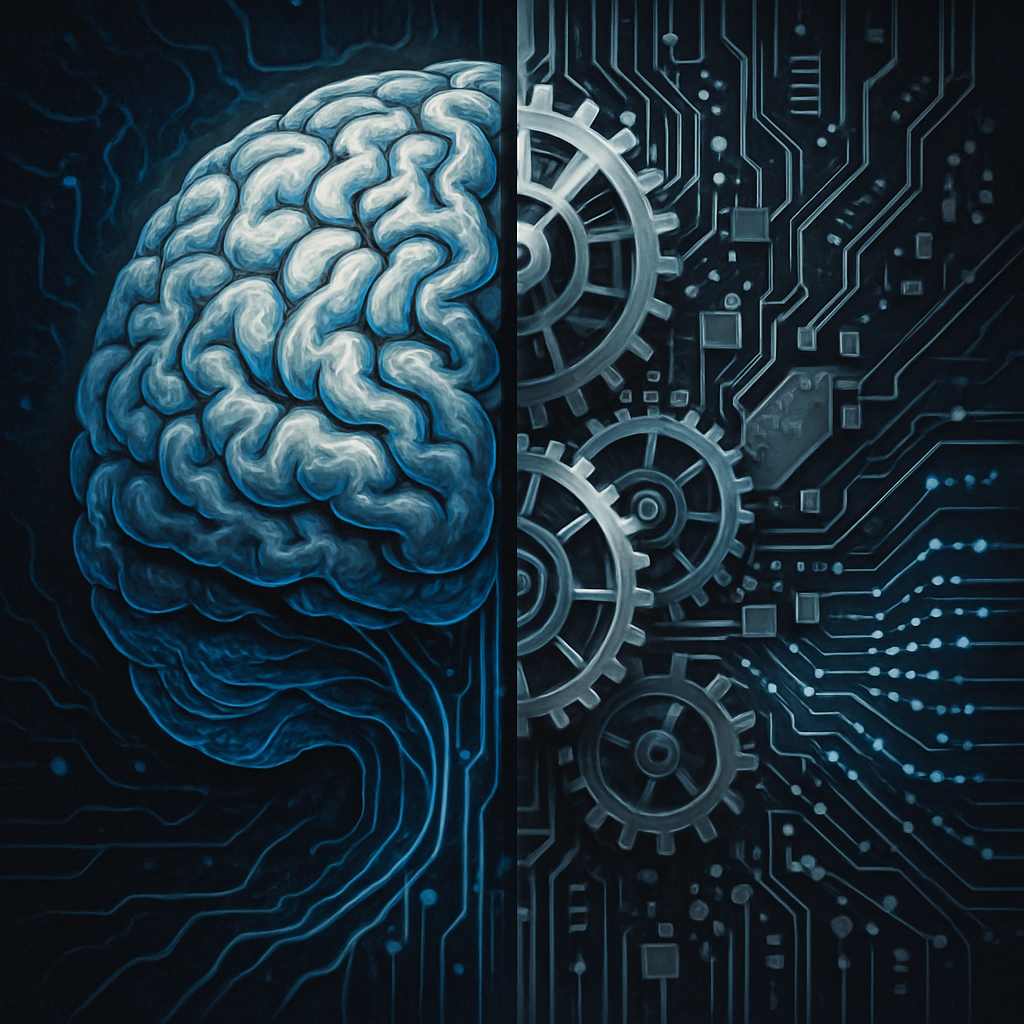
ChatGPT:
Is the Mind Just a Machine?
Introduction
Can we understand the human mind as a machine? This provocative question lies at the heart of Margaret Boden’s monumental work, Mind as Machine: A History of Cognitive Science. Spanning two volumes and thousands of years of intellectual history, Boden examines how metaphors of mechanism, computation, and information have shaped—and sometimes constrained—our understanding of thinking, perception, and consciousness. From early automata to artificial intelligence, she reveals the tangled evolution of a science attempting to mechanize mind.
From Automata to Algorithms
Long before computers, humans built machines that mimicked life. Early philosophers and engineers in ancient Greece and Enlightenment Europe created mechanical birds, musical devices, and hydraulic humans. These automata inspired thinkers like Descartes to imagine the body—and perhaps the mind—as governed by mechanical laws. This mechanistic philosophy laid groundwork for a scientific approach to the mind, one that gained new force with the emergence of cybernetics and information theory in the 20th century.
Norbert Wiener’s cybernetics proposed that control and communication in animals and machines followed similar principles. Claude Shannon’s information theory provided a mathematical framework for encoding and transmitting messages. These ideas sparked a shift: what if cognition could be modeled not as a mysterious essence but as information processing?
The Birth of Cognitive Science
Cognitive science was born from this new metaphor. Rejecting the behaviorism of the early 20th century—which treated the mind as a “black box”—cognitive scientists insisted that internal mental processes could be studied scientifically. Drawing from linguistics (especially Noam Chomsky’s theories of generative grammar), psychology, philosophy, neuroscience, and computer science, they framed thinking as rule-based symbol manipulation.
This period saw the rise of symbolic artificial intelligence (AI), where machines could play chess, solve logic puzzles, and plan actions by applying formal rules to symbolic representations. For a time, it seemed the mind might truly be a programmable system.
Cracks in the Machine Metaphor
However, the machine metaphor faced pushback. Symbolic AI, for all its elegance, often failed in real-world tasks. Systems were brittle, struggled with perception, and couldn’t learn new knowledge outside their coded rules. Enter connectionism—an approach that modeled cognition using artificial neural networks. These systems learned by adjusting connections between units, more like biological brains.
Though powerful in tasks like pattern recognition, neural networks raised new problems. Their learning was opaque, difficult to interpret, and lacked the clarity of logical rules. Yet they introduced a more biological flavor to cognitive modeling, emphasizing emergent patterns over designed rules.
Beyond Brains and Programs
As the field matured, some thinkers argued that neither symbols nor networks fully captured what cognition is. New approaches—like embodied cognition and ecological psychology—suggested that minds aren’t just in the head but arise from interactions between brain, body, and world. Others turned to neuroscience, using brain imaging to ground models in biology. Still others explored artificial life, seeking to simulate mindlike behavior from the bottom up using complex, adaptive systems.
Boden traces all of these developments and more, highlighting the strengths and limits of each. She argues that the mind-as-machine metaphor has been both enabling and constraining. It led to immense progress, but also narrowed vision when taken too literally.
Philosophy at the Core
What counts as computation? Can consciousness be computed? Does a brain “process information” in the same way a computer does? These philosophical questions underpin cognitive science but are often ignored amid technical advances. Boden insists that conceptual clarity is essential. If we don’t define our terms—like “representation,” “meaning,” or even “mind”—we risk building beautiful but misguided models.
She’s also wary of metaphor creep. When we call everything a “computation,” the term loses meaning. She warns against expanding the machine metaphor so broadly that it becomes tautological.
The Future: Hybrids and Humility
Boden’s conclusion is not a rejection of the machine metaphor but a call for pluralism. Minds may indeed have machine-like aspects—but no single model or metaphor suffices. The future lies in integrative approaches: combining symbolic and connectionist models, grounding them in neural data, enriching them with social and embodied context.
Cognitive science, she argues, is still young. It needs not only better models but better self-awareness about its assumptions, metaphors, and blind spots.
Conclusion
So, is the mind just a machine? Margaret Boden’s answer is nuanced: not just, but in important ways, yes. The machine metaphor has catalyzed profound insights into cognition, but it must be held lightly, examined critically, and complemented with other models. As science advances, so must our metaphors.
What we call “mind” may turn out to be not one thing, but many processes—some mechanical, some organic, some emergent. In tracing this intellectual journey, Boden reminds us that how we frame questions determines the answers we seek—and the limits of what we find.
